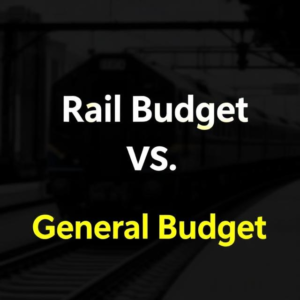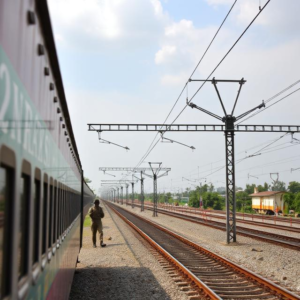Sure! Let’s break down the difference between the Rail Budget and the General Budget in a simple way:
1. General Budget
The General Budget (also called the Union Budget) is a national financial plan for the entire country, presented by the Finance Minister of India every year. It is like a country’s financial blueprint that outlines how the government plans to collect and spend money during the year.
Key Points:
- It covers all sectors of the country like health, education, defense, infrastructure, etc.
- It includes details about taxes, how much the government will earn from them, and how they will be spent.
- The budget focuses on overall national spending, including subsidies, welfare programs, and investments in various industries.
- The Finance Minister presents it in the Parliament, and it affects the entire nation.
For example:
- If the government decides to spend more money on building roads, improving healthcare, or funding the army, it will be mentioned in the General Budget.

2. Rail Budget
The Rail Budget was a separate budget dedicated only to the Indian Railways. It was presented by the Railway Minister and focused solely on the finances of the Indian Railways. It detailed how much money Indian Railways would receive, how it would spend on train services, infrastructure, safety, and more.
Key Points:
- It only focused on Indian Railways, its revenue, expenses, and plans for improvement.
- It included details about new train routes, fare adjustments, upgrades to stations, and new projects like high-speed trains or new railway lines.
- The Railway Budget was presented before the General Budget every year, but in 2017, the Rail Budget was merged with the General Budget, so now the Railways’ financial plans are part of the General Budget.
For example:
- The Rail Budget would mention if there are new trains being introduced, the improvement of tracks, or plans to increase safety measures.
Key Differences between Rail Budget and General Budget:
| Feature | General Budget | Rail Budget (Before 2017) |
|---|---|---|
| Scope | Covers all government sectors. | Covers only Indian Railways. |
| Presented by | Finance Minister of India. | Railway Minister of India. |
| Focus | Focuses on national economy – taxes, welfare, defense, infrastructure, etc. | Focused on Indian Railways – trains, tracks, stations, etc. |
| Presentation | Presented on 1st February every year. | Was presented on 28th February every year (before 2017). |
| Merged or Separate | It is one large budget for the whole country. | Was a separate budget (until 2017). |
| Impact | Affects all sectors of the economy. | Affected the rail network and its users. |
After 2017:
In 2017, the Rail Budget was merged with the General Budget. This means that the financial planning for Indian Railways is now included in the main national budget, and there’s no separate Rail Budget anymore.
Now, the Finance Minister announces both the General Budget and the Railway financial plans together, making the overall process simpler and more integrated.
In Summary:
- General Budget is for the entire country’s finances.
- Rail Budget was only for Indian Railways (but is now part of the General Budget after 2017).
Before 2017, the Rail Budget focused on how much money the government would spend on Indian Railways. Now, this is included in the General Budget, making everything more streamlined.
Keywords: Indian Railway, Railway











